News
USGA and R&A unveil Distance Insights Report
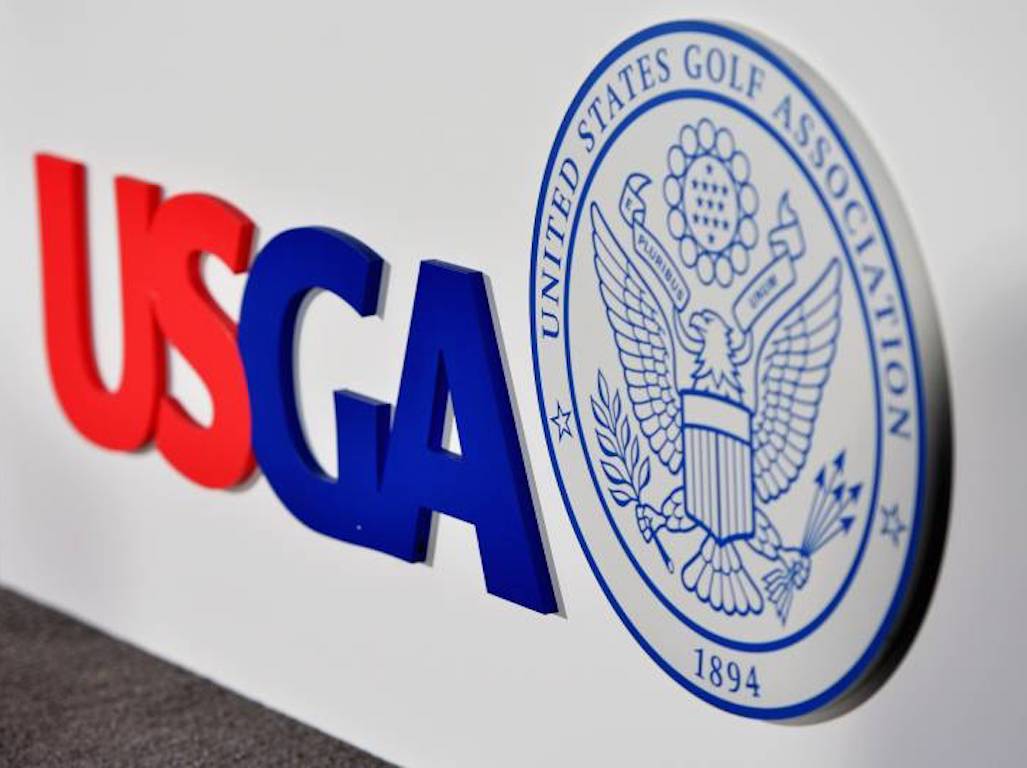
On Tuesday, golf’s governing bodies released the “Distance Insights Report” in which the two ruling authorities found the “continuing cycle” of the “100-year trend of hitting distance increases in golf” is “detrimental to the game’s long-term future.”
The Distance Insights Report is a 102-page document, which includes data and information from 56 different projects that was co-released by the USGA and R&A and which hints at potential significant changes in the equipment rules over the coming years following a “broad review of both clubs and balls.”
In a key findings statement released by the USGA and R&A, the organization revealed that “after extensive stakeholder research, the report features more than 100 years of data, informed by a library of 56 supporting documents.”
Here were the key findings of the report per the USGA and R&A
- There is a 100-year trend of hitting distance increases in golf, as well as a corresponding increase in the length of golf courses, across the game globally The USGA and The R&A believe this continuing cycle is detrimental to the game’s long-term future.
- The inherent strategic challenge presented by many golf courses can be compromised, especially when those courses have not or cannot become long enough to keep up with increases in the hitting distances of the golfers who play from their longest tees. This can lead to a risk of many courses becoming less challenging, or obsolete.
- Increased hitting distance can begin to undermine the core principle that the challenge of golf is about needing to demonstrate a broad range of skills to be successful.
- If courses continue to lengthen, it is at odds with growing societal concerns about the use of water, chemicals and other resources
- Longer distances and courses, longer tees and longer times to play are taking golf in the wrong direction and are not necessary for a challenging, enjoyable and sustainable game.
- A concern has been identified that many recreational golfers are playing from longer tees than is necessary relative to their hitting distances, and, in particular that the forward tees on many golf courses are very long for many of the golfers who play from them.
The USGA and R&A have also stated that with these findings “a broad review of both clubs and balls will be conducted to understand and assess a full range of options for addressing these issues relating to hitting distance.”
The review in question will highlight the following areas in particular (again, language directly from the USGA and R&A)
- The review of overall conformance specifications for both clubs and balls, including specifications that both directly and indirectly affect hitting distances. It is not currently intended to consider revising overall equipment specifications in a way that would produce substantial reductions in hitting distances at all levels of the game.
- The assessment of the potential use of a Local Rule option specifying the use of reduced-distance equipment. Such an option could be available as a choice at all levels of play for competitions, courses and individual players.
- Guidance on the availability of short enough forward tees and the appropriate tee-to-hole playing distances for golfers of all levels.
- Several other topics including equipment testing processes, potential guidance on how design, agronomy and setup can affect hitting distance, and others.
“Bifurcation” has been a hotly discussed toping amongst recreational golfers but was not addressed directly in today’s report.
Bifurcation could potentially lead to both Tour pros as well as recreational golfers playing clubs and balls manufactured to different regulations, but both organizations stressed during a Monday press conference the preference for a single set of rules across the sport.
Tuesday’s review stated that it was “not currently intended to consider revising the overall specifications in a way that would produce substantial reductions in hitting distances at all levels of the game.”
Speaking on the report, Mike Davis, chief executive officer of the USGA stated
“This is not about the last few years or the next few years but rather about the long-term future of the game. This report clearly shows a consistent increase in hitting distance and golf course lengths over the last 100-plus years. These increases have had a profound impact on costs to build, modify and operate golf courses and they have impacted golfers at all levels.
We believe this problem will continue unless this cycle is brought to an end. With collaboration from the entire golf community, we have an opportunity to stem this tide and help ensure golf remains sustainable and enjoyable for generations to come.”
The full 102-page Distance Insights Report is accessible here.
What do you think, WRXers?
- LIKE74
- LEGIT7
- WOW1
- LOL3
- IDHT1
- FLOP10
- OB5
- SHANK74
Equipment
Rickie Fowler’s new putter: Standard-length Odyssey Jailbird 380 in custom orange

Editor’s note: This is an excerpt from a piece our Andrew Tursky originally wrote for PGATour.com’s Equipment Report. Head over there for the full article.
…The Jailbird craze hasn’t really slowed down in 2024, either. According to Odyssey rep Joe Toulon, there are about 18-20 Jailbird putter users on the PGA TOUR.
Most recently, Akshay Bhatia won the 2024 Valero Texas Open using a broomstick-style Odyssey Jailbird 380 putter and Webb Simpson is switching into a replica of that putter at the 2024 Wells Fargo Championship.
Now, Fowler, who essentially started the whole Jailbird craze, is making a significant change to his putter setup.
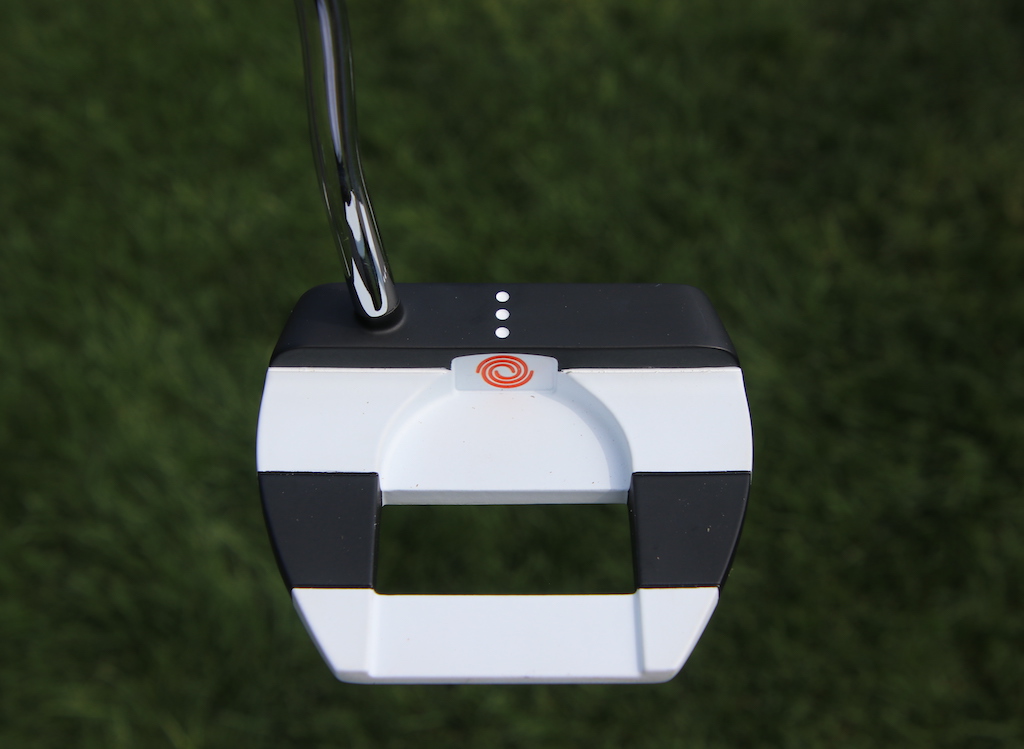
Fowler, who has had a couple weeks off since the 2024 RBC Heritage, started experimenting with a new, custom-orange Jailbird 380 head that’s equipped with a standard 35-inch putter build, rather than his previous 38-inch counter-balanced setup.
According to Fowler, while he still likes the look and forgiveness of his Jailbird putter head, he’s looking to re-incorporate more feel into his hands during the putting stroke.
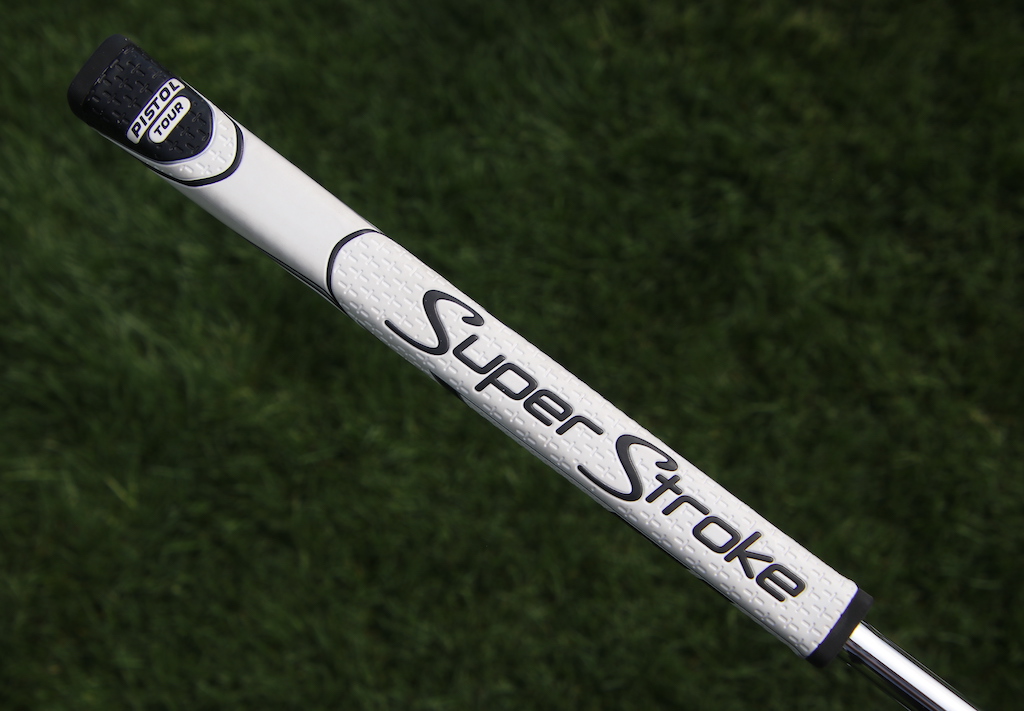
He told GolfWRX.com on Tuesday at the Wells Fargo Championship that the 38-inch counterbalanced setup “served its purpose” by helping him to neutralize his hands during the stroke, but now it’s time to try the standard-length putter with a standard-size SuperStroke Pistol Tour grip to help with his feel and speed control.
Although Fowler was also spotted testing standard-length mallets from L.A.B. Golf and Axis1 on Tuesday, he confirmed that the custom Odyssey Jailbird 380 is the putter he’ll use this week at the 2024 Wells Fargo Championship.
Head over to PGATour.com for the full article.
- LIKE18
- LEGIT2
- WOW1
- LOL2
- IDHT0
- FLOP2
- OB0
- SHANK4
Equipment
Details on Justin Thomas’ driver switch at the Wells Fargo Championship

Editor’s note: This is an excerpt from a piece our Andrew Tursky originally wrote for PGATour.com’s Equipment Report. Head over there for the full article.
So, with a couple of weeks off following his latest start at the 2024 RBC Heritage, Thomas sought to re-address his driver setup with the remote help of Titleist Tour fitting expert J.J. Van Wezenbeeck. About two weeks ago, Thomas and Van Wezenbeeck reviewed his recent driver stats, and discussed via phone call some possible driver and shaft combinations for him to try.
After receiving Van Wezenbeeck’s personalized shipment of product options while at home, Thomas found significant performance improvements with Titleist’s TSR2 head, equipped with Thomas’ familiar Mitsubishi Diamana ZF 60 TX shaft.
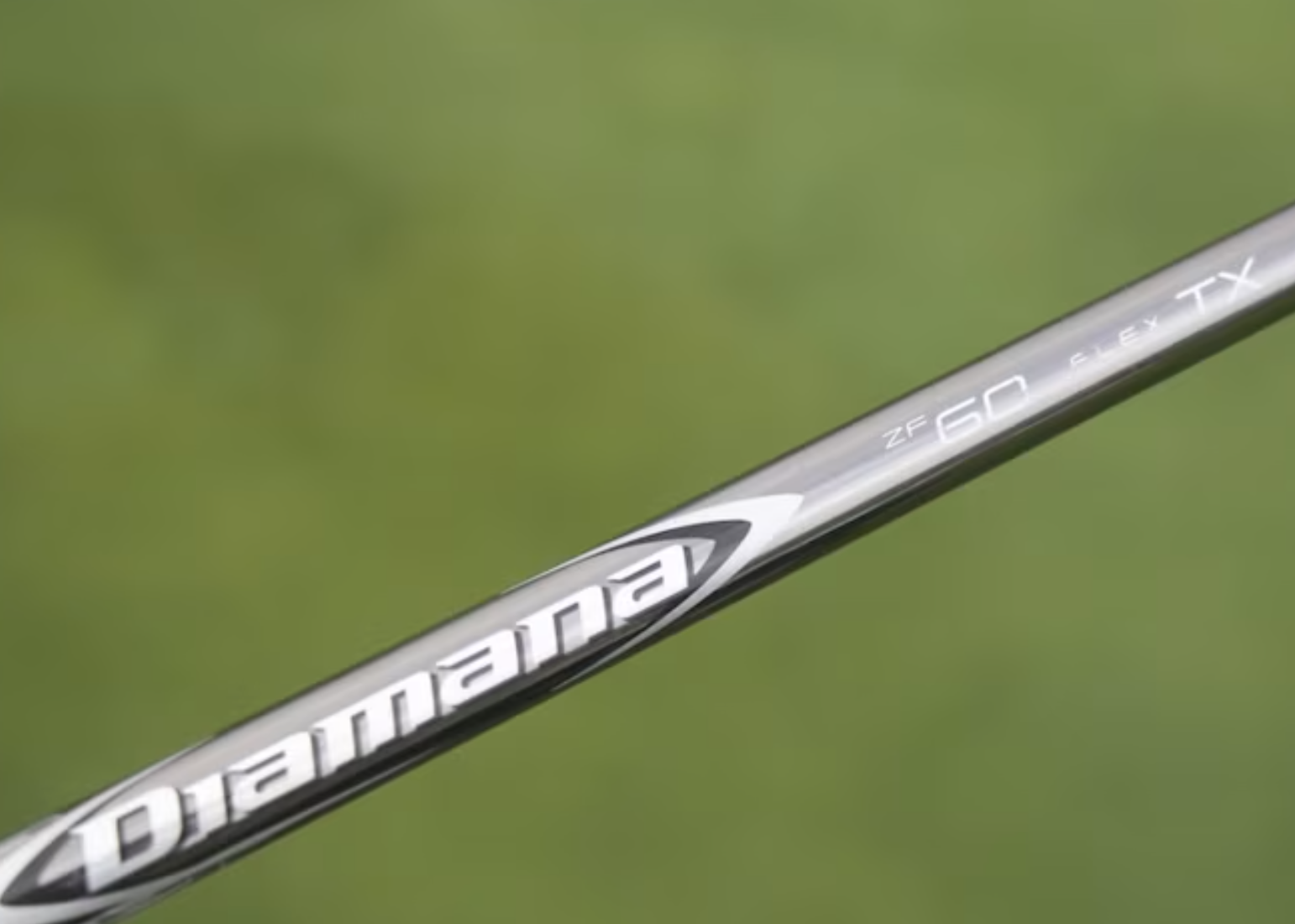
Compared to Thomas’ longtime TSR3 model, the TSR2 has a larger footprint and offers slightly higher spin and launch characteristics.
According to Van Wezenbeeck, Thomas has picked up about 2-3 mph of ball speed, to go along with 1.5 degrees higher launch and more predictable mishits.
“I’d say I’d been driving it fine, not driving it great, so I just wanted to, honestly, just test or try some stuff,” Thomas said on Tuesday in an interview with GolfWRX.com at Quail Hollow Club. “I had used that style of head a couple years ago (Thomas used a TSi2 driver around 2021); I know it’s supposed to have a little more spin. Obviously, yeah, I’d love to hit it further, but if I can get a little more spin and have my mishits be a little more consistent, I felt like obviously that’d be better for my driving…
“This (TSR2) has been great. I’ve really, really driven it well the week I’ve used it. Just hitting it more solid, I don’t know if it’s the look of it or what it is, but just a little bit more consistent with the spin numbers. Less knuckle-ball curves. It has been fast. Maybe just a little faster than what I was using. Maybe it could be something with the bigger head, maybe mentally it looks more forgiving.”
Head over to PGATour.com for the full article.
- LIKE16
- LEGIT1
- WOW1
- LOL2
- IDHT0
- FLOP0
- OB0
- SHANK7
News
5 fall golf trip destinations you should book right now
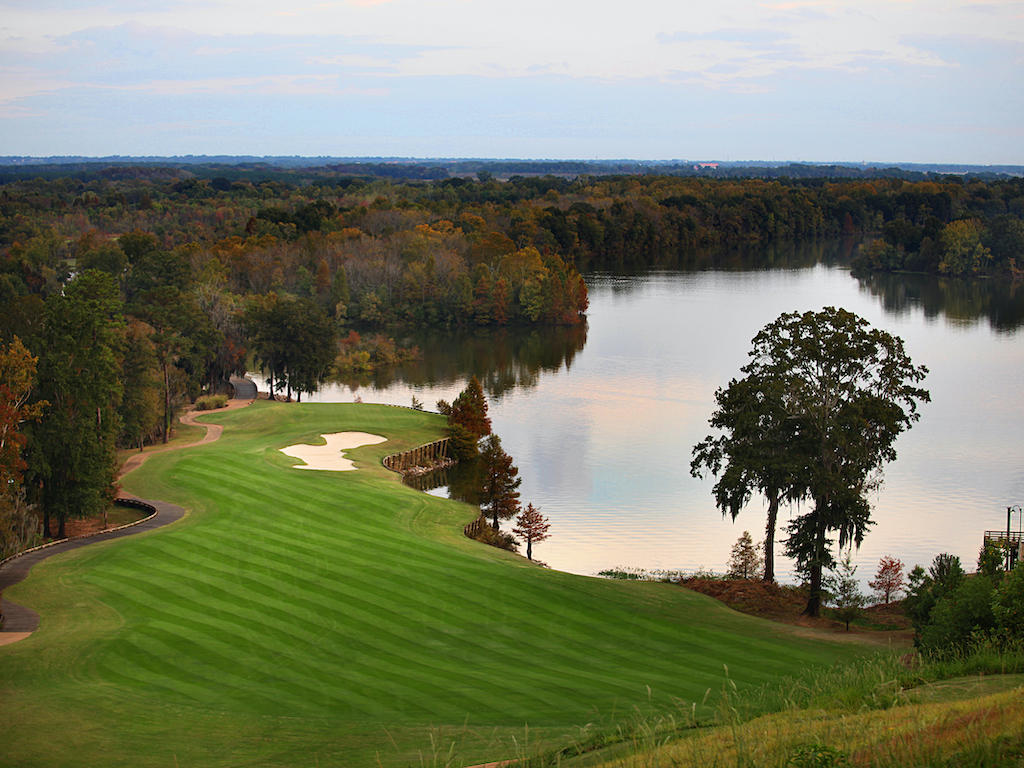
The 2024 golf season is in full swing with the warm weather settling in and those long summer days right around the corner, but what if we told you that you should be thinking about golf this fall? While it may seem to be a ways away, now is the perfect time to start putting together your end-of-season fall golf trip.
Courses are in great shape, the weather is more enjoyable as temps cool off, and your golf game is in peak condition after playing all summer! The best part about fall golf trips is that there are some great deals to be found at golf destinations across the country! Additionally, you can get away to the Caribbean on an all-inclusive trip or travel across the pond for some links golf in the UK or Ireland before the end of their golf season in October.
If you are happy to stay stateside this fall, here are the best golf destinations you should book for your fall trip.
Myrtle Beach, SC
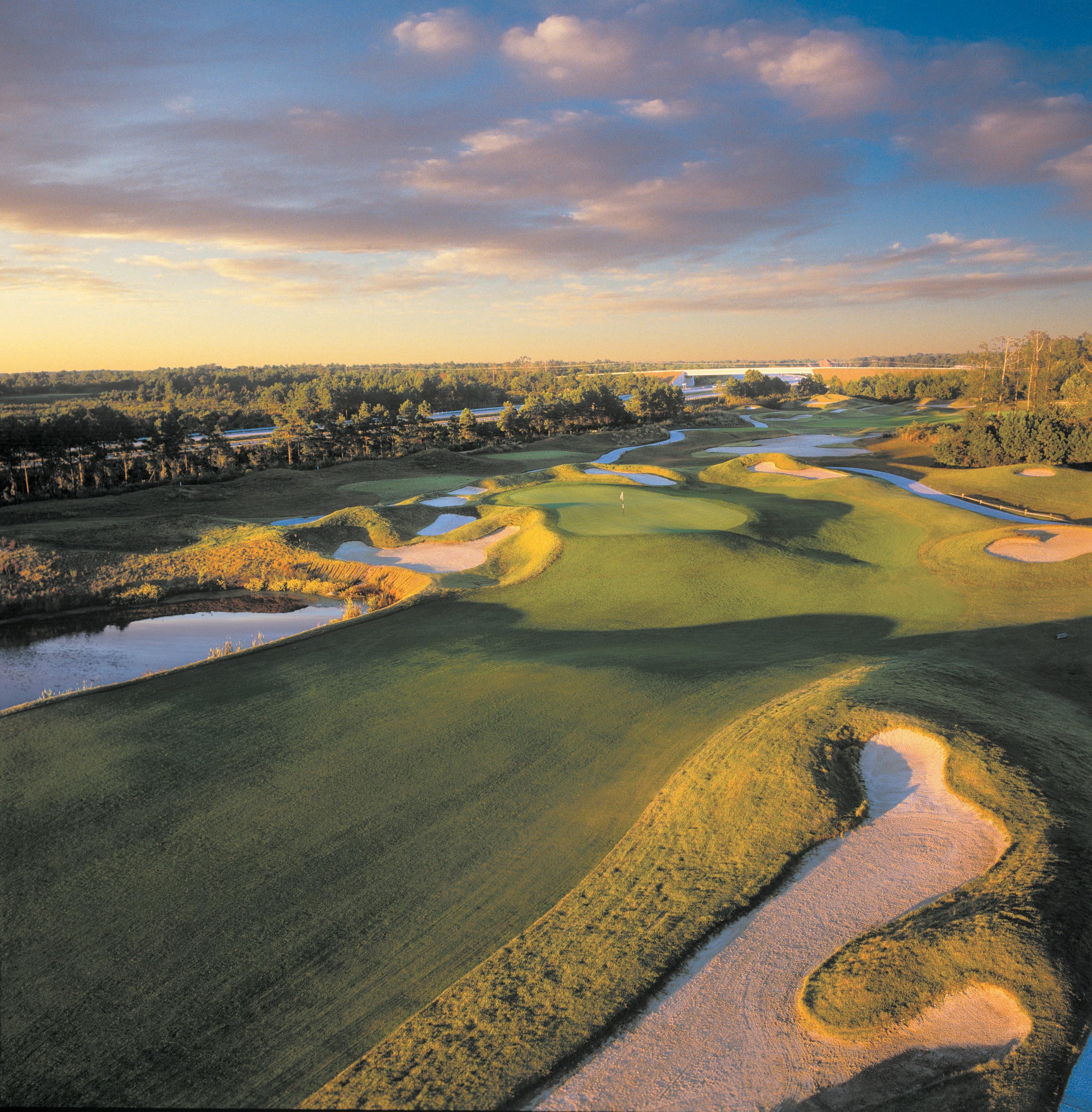
Commonly known as the “Golf Capital of the World”, this coastal destination is home to over 200 golf courses making it the ideal location for a golf trip! If you’re looking for golf and accommodation onsite, choose from a wide range of resorts including favorites like Barefoot and Legends. Alternatively, you could rent a house or stay by the beach and play top tracks like Caledonia, Grande Dunes, Pine Lakes, True Blue, TPC Myrtle Beach and many more! With a plethora of options, you will be able to customize your trip to stay within budget! Fall in South Carolina is a golfer’s paradise with minimal rain, sunny skies, and temperatures in the low 80s (dipping into the 70s in later fall with lower humidity), the perfect combination for a golf trip.

If you’ve never played golf in the desert, fall is the best time to do so and there is no better selection of desert layouts than Scottsdale. With a wide variety of golf resorts, courses, and attractions, it is easy to see why many professional golfers call this place home. Enjoy a golf and city trip with a stay close to the nightlife in Old Town and a tour of the local courses like Raven, McCormick Ranch, and Ocotillo. Head north of the city with a resort stay at The Westin Kierland or Hyatt Regency and play some Championship courses like TPC Scottsdale, Troon North, or Grayhawk. Or head out to the fabulous We-Ko-Pa Resort and Golf Club and indulge in the ultimate desert golf experience. The weather in Scottsdale will be very warm (mid to high 80s), with cloudless skies and green grass contrasting the desert landscape.

The golf mecca in the state of Florida, Orlando is a great golf destination any time of the year, but fall is really where it flourishes. Course conditions are impeccable, the weather is warm with fading humidity, and there are a multitude of off-course activities for the whole family. Stay & play at some of the best golf resorts like Reunion and Omni Championsgate or tick off a bucket list course when you visit Arnold Palmer’s Bay Hill. A few other reasons this destination is so popular is the wide variety of rental houses throughout the area, perfect for a large group and the quality courses to choose from including Waldorf Astoria, Celebration, Shingle Creek, and the three Disney courses! With easy accessibility through the MCO Airport, Orlando is a no-brainer for a fall golf trip.

PAIUTE GOLF RESORT – LAS VEGAS, NEVADA
A destination often overlooked when it comes to golf, Las Vegas in the fall is a wonderful treat! A stay on the iconic Las Vegas Strip gives you a wide range of 3 to 5-star hotel options within walking distance to the city’s biggest entertainment venues, casinos, restaurants, and more! For golf options, you will need to travel outside of the city (roughly 20 mins) to play some incredible desert layouts like Rio Secco, Revere, Cascata, and the trio of courses at Paiute Golf Resort. If you fancy a longer day trip, you can always take the hour-long drive up to Mesquite and play Wolf Creek and Conestoga for a pure desert golf experience.
Alabama – Robert Trent Jones Trail
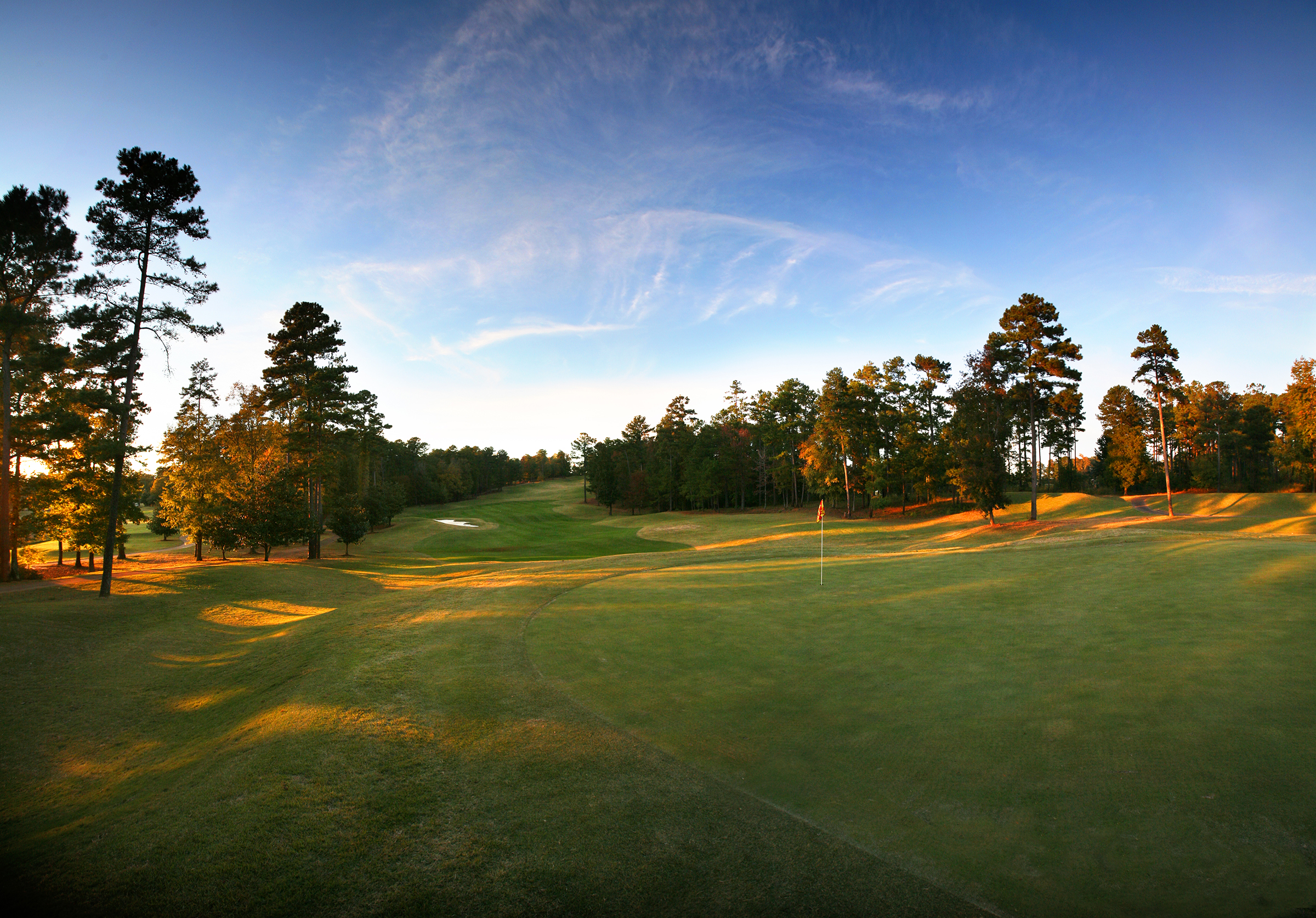
If you’re a golf nerd (like me) and you’re looking for something a little different for your trip, look no further than the incredible RTJ Trail in Alabama. The Trail spans 11 different locations across the state with over 400 holes of golf all designed by legendary course designer Robert Trent Jones, Sr. The more popular courses on the trail are in Birmingham, Montgomery, and Auburn, making it perfect for an extended trip. Some of the best courses on the trail include Ross Bridge, Grand National (2 courses) and Capitol Hill (3 courses).Weather-wise, fall is the best time to hit the trail with average temps hovering around 80s (dipping into the 70s as fall goes on) with a limited amount of rainfall. The summer months are usually where the pricing is the highest so you can find the best deals in the fall with courses still in good condition.
There has already been a huge uptick in fall golf trip bookings, so make sure to start planning now to get the travel dates and tee times you want for your group!
Editor’s note: This article is presented in partnership with Golfbreaks. When you make a purchase through links in this article, GolfWRX may earn an affiliate commission.
RELATED: 7 PGA TOUR courses you need to play
- LIKE3
- LEGIT2
- WOW0
- LOL1
- IDHT0
- FLOP0
- OB0
- SHANK0
-

 19th Hole2 weeks ago
19th Hole2 weeks agoJustin Thomas on the equipment choice of Scottie Scheffler that he thinks is ‘weird’
-

 19th Hole2 weeks ago
19th Hole2 weeks ago‘Absolutely crazy’ – Major champ lays into Patrick Cantlay over his decision on final hole of RBC Heritage
-

 19th Hole2 weeks ago
19th Hole2 weeks agoLET pro gives detailed financial breakdown of first week on tour…and the net result may shock you
-

 19th Hole2 days ago
19th Hole2 days agoReport: LIV star turns down PGA Championship invite due to ‘personal commitments’
-

 19th Hole1 week ago
19th Hole1 week agoGary Player claims this is what ‘completely ruined’ Tiger Woods’ career
-

 Whats in the Bag2 weeks ago
Whats in the Bag2 weeks agoTeam McIlowry (Rory McIlroy, Shane Lowry) winning WITBs: 2024 Zurich Classic
-

 19th Hole3 weeks ago
19th Hole3 weeks agoTaylorMade signs 15-year-old AJGA Rolex Junior Player of the Year to an NIL contract
-

 Equipment1 week ago
Equipment1 week agoGolf fans left surprised by LIV’s choice of course for its 2024 individual championship event











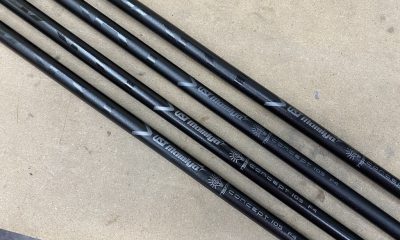











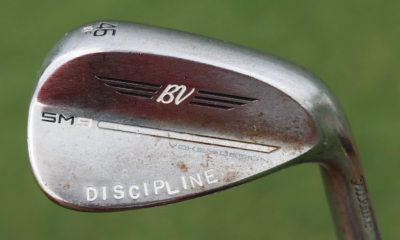



8thehardway
Feb 6, 2020 at 12:20 pm
Ban drivers. No clubs under 16* or over 44 inches allowed in tournaments and maybe ban ’em for handicap purposes.
Recreational golfers’ score lower, play appropriate tees and save billions on clubs and millions on lessons. Golf is easier, more people play.
Courses don’t need to build longer, maintenance reduced and Tom Kite has another chance to win the British Open.
Ell
Feb 5, 2020 at 6:43 pm
Suggest getting the 1986 book ‘Search for the Perfect Swing’ by Alastair Cochran and Jhn Stubbs. Chapter 26, page 170, Table 26:2, “The computed effect on various drives of using a lighter ball”. The table compared the differences in Carry and Total Yards between a 1.62 ounce ball and a 1.3 ounce ball. I also agreed with changing from 18 holes to 12 holes, as per the original golf round.
DS
Feb 6, 2020 at 5:55 am
I’d still want to play 36 a day. 😉
Paul Shirley
Feb 5, 2020 at 6:11 pm
for all pro tour players courses just start tapering the fairways starting at 250 yards out 20 yrs wide , 260 15 yds wide , 270 10 yds wide , 280 and up 5 yds wide , with the rough 4″ deep off the fairway , also make the greens harder , i am 82 yrs old with usga 10 handicap , avg drive 225yds .
meme
Feb 5, 2020 at 6:19 pm
also mage the greens smaller
HappyDuffer
Feb 5, 2020 at 6:05 pm
And what a surprise the governing bodies fail to understand what the data is really showing them and see only what they want to see. That said… increasing pro course lengths is not the answer. Perhaps they should reduce the cor limits for the pro tour only?
A. Commoner
Feb 5, 2020 at 12:29 pm
Quite a report! Part I: things you already know…Part II: ‘thingees’ we are going to look at. I think, with all the lead-up, many people expected more.
Marty
Feb 5, 2020 at 11:28 am
The USGA and the R&A are doing nothing more than moonwalking across the stage. Well at least they have their white glove on – for what good it does them. Now they need to actually go out and play a round of golf and see how that squares with their report.
They also need to rollback the ball and raise the goal another five feet in the NBA.
Kevin
Feb 5, 2020 at 10:02 am
The most important thing that the R&A/USGA have not talked about is how the distance the pros are hitting it is hurting recrational golf due to pace of play. There are countless golf hacks, we’va all seen them, cargo shorts, shirt un-tucked, hat on backwards… They see Koepka, McIlroy, Woodland hit it 330+ on tv and think,’I can do that too’. They get to the course thinking they will impress thier playing partners, play from ‘the tips’ and come out of thier shoes when they swing. Yes, they hit it 300+ but nowhere near the fairway and into the deep hay, trees, bushes etc. Then spend 10 minutes (not 3, they don’t know the rules) looking for that $4 ProV1 (that they probably found on the previous hole during THAT 10 minute search). These are the guys that turn a 4 hour round into 5+ for EVERYONE behind them and that is the biggest threat to the game we love. I wish i had a easy solution to this problem but I don’t. Trying to educate these guys about playing for the correct tees, playing within themselves and limiting ball searches to 3 minutes is probably futile. More marshalls would helo but that will cost each course more $. Rolling the equipment back so the guys on TV are hitting it 275 off the tee? Maybe.
CPG
Feb 5, 2020 at 8:38 am
Dial equipment back? So you want to take a guy that swings it 95 from hitting a 7 iron to a 5 iron and a guy that swings it 125 from a wedge to a 8 iron….makes perfect sense.
YouSoSully
Feb 5, 2020 at 9:57 am
Realistically the current 7 irons have the loft of some older 5 irons. It shouldn’t really matter what number is on the club you hit, it should be more about loft. When I hit my 48* PW 15+ yards shorter than my groups 43* PWs I don’t blame the tech in my equipment.
Patrick
Feb 5, 2020 at 7:08 am
USGA and R&A are completely right on this subject. Stop complaining about “what the governing bodies need to do is….blah blah blah”. Your like that Boomer at work that bitches just to get through the day.
Alex
Feb 4, 2020 at 11:18 pm
USGA is out to lunch. Clubs are at their limit. So players are getting longer via better training and or better fitting by knowing what produces better results.
Longer plays will still be longer even if you roll the ball back. In fact they will be even longer in comparison to the shorter players. PGA tour pros are whiney little b___s. They complain about courses being too tough all the time. So when you have more players that are stronger than in the past with courses allowing you to hit the ball all over the map, this is what happens.
And then USGA is wasting money doing these stupid studies.
Maybe USGA should not allow trackmans and gyms on tour. I dont see ATP complaining about Fed Nadal and Djok being the best 3 of all time. Maybe ATP should change it so you can’t play into your 30s.
As ohers have said make it tougher at 300+ yards if Rory can hit it 330 dead center than hats off to him.
Regis
Feb 5, 2020 at 7:46 am
If the USGA is “out to lunch” then its obvious you have been refused service at the restaurant. Golf courses have been closing at an alarming pace for 20 years , That includes private clubs. Real Estate is too valuable and environmental restrictions and maintenance costs are forcing owners out of business. The alternative is to raise fees, Tough to do where participation peaked about 20 years ago and nothing seems to attract new interest. Nicklaus started raising these concerns 25 years ago. Biggest complaints offered as to lack of interest Too expensive. Takes too long. All tied into golfers demand for “championship” courses ” carpeted fairways and pristine greens. People will learn to adapt to electric cars (Aaagh).Real Golfers will learn to adapt or give up the sport.
JB
Feb 4, 2020 at 9:29 pm
We do have to do something to prevent further distance gains. We don’t necessarily need to roll things back, but distance gains at the current rate are bad for the game.
Vincent Collier
Feb 5, 2020 at 7:02 am
Why? How?
Maybe for the top 120 freaks of nature who spend their days conditioning /practicing and have companies fitting them with radar and 3D modeling
But for the 99.997 rest of the golfing public? Not so much
JThunder
Feb 4, 2020 at 8:40 pm
So, two problems identified are that 1. courses are becoming obsolete because of distance gains and 2. too many amateurs play courses at longer tees than they should.
And no one spots the contradiction?
“Golf needs to be easier for amateurs” is NOT in the spirit of the game. The game, for hundreds of years before modern manufacture, was difficult for everyone. Games – and sports for that matter – are *supposed* to be a challenge. If they were easy – “point and shoot” – then why would anyone bother? Why accept any rules or keep score? Want to make golf “easier” – take a mulligan on any shot you don’t like, “gimme” anything inside 20 feet, and refuse to write down anything worse than bogey. Done.
If you want to protect “courses” (ie; the egos of designers and club members) at the elite level, the only solution still possible is a “tour ball”. The ball itself is only a small part of overall distance gains – along with clubheads, shafts, fitting, customization, fitness… etc. BUT, some of these cannot be rolled back and the industry would not accept others.
I think “bifurcation” is a shame in a game that’s always prided itself otherwise. But when capitalism outpaces regulation and common sense, I guess the results are often shameful. (Driverless cars, anyone? Delivery robots?)
OR – just accept that tournaments are still won by the person with one less stroke than everyone else. Because that is always true regardless of whether everyone shoots 59 or 82.
Deacon Blues
Feb 4, 2020 at 8:14 pm
It’s really quite simple. Either eliminate the concept of par altogether (as proposed in this April 2018 GolfWRX article: http://www.golfwrx.com/495034/lets-retire-old-man-par-a-modest-proposal/), or aggressively modify par (instead of course setup) at elite male events so that winning scores are at even par or slightly better. The USGA has done this at the US Open for years, but neither they, nor the PGA Tour, nor the other pro tours should feel compelled to make each course a par 70 or more. Augusta National should probably be a par 68 at this point, and there’s nothing wrong with that.
ShortKnocker
Feb 4, 2020 at 7:56 pm
Roll back the ball. It is 98% of the problem. Golf isn’t supposed to be easy and amateurs will always suck regardless of how far they hit it. If I can only hit it 200 yards then perhaps I should swallow my pride and move up a set of tees. Every week I see folks who can’t hit it out of their own shadow playing the back tees. Shame.
I know donkeys
Feb 4, 2020 at 6:16 pm
Matt Kuchar sucks big donkey.
simms
Feb 4, 2020 at 5:40 pm
Killing the distance is easy but will it also add more shots to the amateurs playing the same course? Any course the pros play can be made harder by adding water, sand and waste areas full of bushes and trees. You Put 50 yards of penalty area starting at 290 yards to 340 on 490 plus par 4’s and 600 yard par 5’s and you add 3 to 4 shots around to the pros average round. Killing the 300 yard plus drive on par 5’s would end the distance problem overnight. But would that same waste and penalty area 230 to 280 from amateur tees hurt that game more?
bravo
Feb 4, 2020 at 4:47 pm
I feel that distance at an elite level is reflection of many variables. In all sports the athlete over time just is better than what it was 5, 10 years prior…but the state of golf does not accept this – the evolution of technology and how to apply effectively to the modern athlete is what is driving the ball farther..Its not killing the game of golf in fact I feel it has revitalized the game than it was say 5 years ago..the perception you have to make golf courses longer is bs: thats limited thinking / pure laziness on the course designers part…considering that the courses that are being built will never see a major event/competition.. why make it longer? Golf is a dying sport and unattractive if you are at a loss of time. To develop the necessary skills to be basic on the course is a challenge and to get a round in against other amateurs is long and tedious -This has nothing to do with the course being long. The problem in general is with how it is being interpreted… The Tour dictates how tough the courses play, they want the pro’s to score and use what skills they have…to say it is not a skill to drive the ball within a window to at least wedge it on the green – YOU are f**king stupid especially swinging at the speeds they do… The governing bodies want to place blame* lets call it what it is – the old guard of golf is what is killing the game…
Mat
Feb 4, 2020 at 4:27 pm
“But if you slow down the equipment (I’m looking at you, ball!), don’t you mess up recreational players? Don’t you need to bifurcate the game? No, you don’t. First, it’s already bifurcated. Recreational players typically don’t get fitted for their clubs, they use a ball wrong for them, and they’re not the ones making courses obsolete. They won’t be affected by a slower ball because they can’t hit it with purpose anyway.”
This paragraph is __EXACTLY__ why the USGA is out of touch. The USGA has bought into the fantasy that 25-cap players have bought into… somehow the weekend hacker is too long. The hard truth is you need to hide the long tees from the average player. Frankly, if a few more 59’s show up on tour, who cares? If you get players breaking 90 more often, you’ll have more golfers. Do it with appropriate tees, and for goodness sakes, leave things generally alone. Data sets are better now, but really, how much “longer” do you think the 25-cap crew is compared to 2010? Zero. That’s what. We already hit a maximum, we’ve lived with it for 10 years, and the world hasn’t ended. Why punish us now?
Mat
Feb 4, 2020 at 4:19 pm
This is insane. It’s all a setup to change equipment rules. It’ll drive a lot of people away from the game.
Bifurcation should be in the game *rules*, not the equipment. If the USGA wants to impose a ball restriction, fine, but it has to be for EVERYONE. Changing to “only the pros use this equipment” is a death sentence to the health of the game. Golf is the one game where absolutely no one wants to be seen as a cheater (sans Patrick), so at what level to you require “tournament balls” or “tournament clubs”?
If the USGA wants to “roll back” the ball, fine. But it needs to be EVERYONE. No exceptions. I’m not interested in KickX balls.
Vincent Collier
Feb 5, 2020 at 7:12 am
A death sentence? Hardly…
How about this scenario, a large manufacturer decides it needs to sell clubs and sees the USGA/RA as impediments to that. And decides on releasing an “unlimited” line of clubs/balls.
At some point distance will reach its theoretical limit… physics dictates that. Why fight it. Baseball limits rebound by requiring wood bats; the limit has been reached there.
Grow the rough, bring back the second cut, narrow landing zones, and firm the greens for tournament play… THAT is a whole lot more practical than whatever will come out of the USGA/R&A
Retired Cart Boy
Feb 4, 2020 at 4:03 pm
Bifurcation today, bifurcation tomorrow, bifurcation forever!
I don’t understand why this is so difficult. The game needs to be made easier for most amateurs, and harder for the professionals. You’re not going to be able to accomplish this with both groups using the same equipment.
mizuno29
Feb 5, 2020 at 9:37 am
Couldn’t agree with you more!
[email protected]
Feb 4, 2020 at 3:27 pm
I’m a 76 year old Passionate golfer who’s recovered from 2 strokes & I normally play 4 times weekly & practice on days I’m not in some doctor’s waiting room. This schedule can be substantially less during our winter months (like today 10 degree chill factor with 25mph north wind).
I took particular note of one comment in the Distance Report:
“We have a particular concern that the forward tees at many courses are very long for the hitting distances of many of the golfers who play from them.”
My average Driver distance is 175 yards, including rollout on medium firm fairways. At 70 YO I started playing the “white Tees (old man Tees (5644 yds)., but after a few years & a bad stroke I was no longer able to reach most of the par 4’s & a few par 3’s in regulation using a 3-wood.
A golfing friend of mine suggested I consider playing the Red Tees (“Women’s Tees”).After a few weeks of trying to set my male ego aside & deciding I would just have to be tough enough to suffer the “Slings and arrows” of others I took the leap & I’m not sorry that I did. Wow, it was so refreshing & energizing/confidence building to be able to hit a few mid irons into some of the par 3’/4’s. I felt like I was back to playing golf instead of just trying to survive another bad round.
There’s a few other old Hackers in my golf group that need to move up, but, their male egos are dominating them, IMO.
I make these comments that the rules makers of golf give serious consideration to us hackers. I quit trying to buy new clubs every year or 2 in hopes of regaining some distance. Fact is, I quit trying because I can’t hit the new Pricey wonder clubs any better than my current equipment & I can’t afford it either.
I liked the analogy about baseball in comparison to Golf. It helps clarify the issues if Distance. except distane does not apply to equipment changes in baseball
Thanks
Fastfade (the Hacker)
Bob
Feb 4, 2020 at 3:25 pm
2013 US Open at Merion Rose won at +1. Why? Short course that demanded you hit the ball in the fairway or you weren’t going to hold a green or at the very least have a good look at birdie. How long have the same restrictions been on these golf clubs? Quite a while now. The athletes are better and there are many more known ways to increase distance by putting in the work. Quit crying about distance. Phil has more club head speed now than ever and he hasn’t done squat since he’s gained the speed. Eliminate 1st cut of rough and make it an absolute penalty to miss a fairway. You’ll start seeing longer irons into greens and a premium on iron play and shot shaping. Tbh on a week to week basis I dont see the issue with some low scoring rounds of golf. This isn’t the balata and persimmon era even though no one complained when they were shooting low scores. Sports evolve and the athletes obviously get better. Make the courses tougher and not longer.
Vincent Collier
Feb 5, 2020 at 7:15 am
Amen
Grow the rough, bring back the second cut, narrow the landing zones and firm the greens… change the conditions for tournament play
Jeff Allen
Feb 4, 2020 at 2:39 pm
Yes, because I want to see Mike Trout using Ty Cobb’s glove, or Usain Bolt running in Jessie Owens’ shoes. Let it be
DJ
Feb 4, 2020 at 2:25 pm
Require each manufacturer to make a tour only ball with restricted characteristics if you can’t/don’t change the course layouts. Reduce the number of clubs allowed from 14 to 12. Don’t allow wedges over 56 degrees. Reduce the number of holes on a layout from 18 to 14 allowing for longer holes or 90 degree dog legs. Design the holes to run uphill at 10 degrees up to 340 yards then drop down a bit to the green – eliminate some rollout. Mow the fairways back towards the tee box to influence the grain.
19_Majors
Feb 4, 2020 at 2:11 pm
Webb Simpson beat Tony Finau in a head-to-head playoff last week. One of the shortest hitters on tour vs. one of the longest hitters on Tour. If distance was everything, Webb would’ve had no chance of winning. But Webb ended up in that playoff, and Webb won. How far golfers hit it clearly isn’t the only thing that matters. We don’t need to reel in ANY equipment or make golf courses ANY harder until there is a clear trend of WINNING TOURNAMENTS favoring only long hitters.
Progolfer
Feb 5, 2020 at 8:04 am
Webb averaged 8.5 yards less than Finau in the WMPO. No offense, but that debunks your argument.
Dyson Bochambeau
Feb 5, 2020 at 10:09 am
Compare the top 10 in distance to the top 10 in the world
Kim Hay
Feb 4, 2020 at 2:00 pm
The whole argument is summed up in the second bullet point of the key findings “golfers who play from their longest tees”. So, the USGA and the R&A is focused on the 5% or less golfers who play from the longest tees and that the courses may not be challenging enough for them.
It is time for these bodies and golf clubs in general to focus their efforts and marketing on the recreational golfer, those who carry a handicap from 5 to 48. Ask them if courses are too tough or if they need longer tees. Golf clubs should be promoting quality, fun courses from 4000 to 6300 yards for the 95% of the people who will come to play. Let the “championship” courses chase the 5%. Keep operating costs down and promote your product to families, juniors, seniors and the occasional golfer.
This game will not survive without a complete re-think of who it is for and how we can provide that product. I do not see the USGA and the R&A doing much to in that regard.
GMatt
Feb 4, 2020 at 3:58 pm
You’re asking the USGA to think? Good Lord that would be like putting lipstick on a pig… they’re incapable of relating to their membership (which I refuse to be one) and only focused on the top less than 1% of all golfers… They are way out of touch
PaulVL
Feb 4, 2020 at 1:59 pm
You don’t need to make courses longer, or change equipment/balls, just make the courses the pros play on more difficult. Put more dog legs, left and right that cannot be cut off by long hitters. Make the landing area for long hitters smaller, with tall rough, or difficult fairway bunkers with a greater risk, than reward. Unfortunately, money is the key motivator for the manufacturers, players and PGA, so I doubt little will change.
Club Pro Guys Neighbor
Feb 4, 2020 at 1:38 pm
As a PGA Professional, this report does not speak to what is important to continuing to grow the game. Making the game harder is not the answer. You have the PGA trying to include everyone and the USGA trying to make it more difficult which would disproportionately affect the average golfer not the competitive golfer. While courses could be outdated because of length there are many things that can be done to make courses more difficult at there 300+ distances off the tee ie. trees, bunkers, penalty areas. This obstacles would make the course tighter and more difficult for longer golfers, but would maintain less of a degree of difficulty for the higher handicap and shorter players while also reducing the area of the course that requires significant input from water and chemicals.
Rich Douglas
Feb 4, 2020 at 1:35 pm
Use baseball as a comparison. In 1930, the entire American League hit .300. In 1968, only one person (Yaz) did it. In other words, players didn’t necessarily get better and better. Fences are still the same (or similar) distances as they were 50 years ago. Hitting .300 or batting 30 homers is sill a big deal. Why? Why haven’t things changed? Why, except for the steroid years, aren’t players hitting it 400 feet?
Because of the pitchers. See, as hitters got better, stronger, and bigger, so did pitchers. They got faster. They developed more breaking pitches. They got better.
Golf has no such off-set. It is the player against the course. The only way to hold back the players–who get stronger and more fit all the time–is to (a) slow down the equipment or (b) make the courses harder or longer. But if you do (b), you run the risk of ruining courses or making them unfair (rewarding and punishing shots almost at random). So what to do?
You have to do something about the equipment. Some measures have helped, like limiting what the driver can do. (Irons are already pretty self-limiting.) But the players keep getting longer.
But if you slow down the equipment (I’m looking at you, ball!), don’t you mess up recreational players? Don’t you need to bifurcate the game? No, you don’t. First, it’s already bifurcated. Recreational players typically don’t get fitted for their clubs, they use a ball wrong for them, and they’re not the ones making courses obsolete. They won’t be affected by a slower ball because they can’t hit it with purpose anyway.
The problem here isn’t what it will do to recreational players. It’s what it will do to equipment manufacturers who sell fantasies to those players. And those companies seem to rule the game. Good luck changing that!
ewfnick
Feb 4, 2020 at 1:41 pm
This.
Dick Ruggles
Feb 4, 2020 at 2:39 pm
They raised the mound and pitchers dominated 1968. They lowered it in ’69 and hitters improved.
Wound ball. Persimmon woods. Steel shafts. No 60* wedges. Golf fixed.
Thomas A
Feb 4, 2020 at 2:24 pm
Webb is not one of the shortest on tour anymore. He’s been working on his body and swing for the past two years and has gained substantial distance.
Shallowface
Feb 4, 2020 at 2:48 pm
I thought you were going to get this right, but you missed.
The reason baseball hasn’t changed has nothing to do with the athletes.
Baseball didn’t allow it’s equipment to change as golf has. Neither the bat nor the ball.
There is a good reason for this. Baseball stadiums are by and large built and maintained by taxpayers. Baseball can’t come to the taxpayers and ask for new and bigger stadiums because they didn’t have enough sense to keep a handle on equipment.
I would submit that pitchers have gotten worse over the 50 years I have been following baseball, not better, but that’s a discussion for another place. There are no Seavers or Gibsons out there throwing 15 complete games in a season with ERAs under 2.00.
Truth is I don’t know why the USGA bothers. If they attempt to shorten the ball, the PGA Tour will choose to ignore it, and the buying public will follow, rendering the USGA even less relevant than it is today.
The USGA will do nothing, and like it.
Jeff Allen
Feb 4, 2020 at 3:06 pm
Only partially correct look at a 1930s era glove vs today
Shallowface
Feb 4, 2020 at 4:54 pm
My comment was “neither the bat nor the ball.”
Gloves aren’t relevant when the discussion is about stick and ball distances.